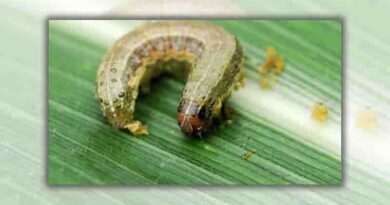
EPA Proposes Registration of New Herbicide Trifludimoxazin in the United States
13 June 2025, US: The U.S. Environmental Protection Agency (EPA) has announced a proposed registration for trifludimoxazin, a new broad-spectrum herbicide, inviting public comment as part of the regulatory process. This move, released on June 11, 2025, introduces a potential new tool for American farmers to control broadleaf and grass weeds, ultimately supporting higher crop yields and a stable food supply.
Trifludimoxazin Offers New Weed Control Option for Farmers
Under the proposal, one technical product and five end-use products containing trifludimoxazin are being considered for registration. Three of the end-use products feature trifludimoxazin as the sole active ingredient, while two others are co-formulated with saflufenacil, an herbicide already approved for use. If approved, trifludimoxazin would expand weed management options for growers, particularly in challenging weed-resistance scenarios.
EPA’s Risk Assessments Show No Major Human Health Concerns
The EPA’s proposed registration is backed by a series of comprehensive assessments, including human health and ecological risk evaluations as well as a biological evaluation under the Endangered Species Act (ESA). According to the agency, no human health risks of concern have been identified when trifludimoxazin is used as directed on the product labels. The agency’s assessments also found no acute or chronic risks to freshwater and marine invertebrates, fish, amphibians, mammals, birds, or bees in acute exposure scenarios.
Potential Risks Identified for Certain Plants and Pollinators
However, the evaluations did identify potential risks to certain non-target plant species, as well as possible chronic risks to bees and non-Apis invertebrates that may forage on treated fields where products also contain saflufenacil. In response, the EPA has outlined several mitigation measures aimed at protecting vulnerable species and habitats.
Mitigation Measures to Protect Endangered Species and Sensitive Habitats
These include mandatory spray drift buffer zones, restricted usage within the contiguous United States, prohibition on non-agricultural applications, and specific runoff mitigation requirements that applicators must follow through the EPA’s Mitigation Menu platform. A critical aspect of the mitigation strategy also requires users to consult the “Bulletins Live! Two” web-based system for endangered species protection measures before application.
With these mitigation measures, the EPA’s draft biological evaluation predicts no likelihood of jeopardizing listed species or adversely modifying their designated critical habitats. However, final determinations will involve further steps under the ESA framework.
Public Comment Period Open Until July 11, 2025
Following the 30-day public comment period, which ends on July 11, 2025, the EPA will review all input alongside its draft risk assessments to determine whether the registration meets the standards outlined in the Federal Insecticide, Fungicide, and Rodenticide Act (FIFRA). Should any concerns remain regarding endangered species, the EPA will consult with the U.S. Fish and Wildlife Service and the National Marine Fisheries Service to develop final biological opinions. If additional mitigation is deemed necessary, the EPA will coordinate with the registrant to make appropriate labeling or registration adjustments.
Also Read: Bayer Launches New Insecticide ‘Bicota’ for Managing Stem Borers in Paddy
📢 Reach Farmers, Share Your Story, and Grow Your Brand!
Got news to share? A company story to highlight? Looking to launch an impactful advertising campaign? Connect with us at info@krishakjagat.org or nimishgangrade@krishakjagat.org and make your mark!
📢 Connect with 100+ Million Farmers! India’s leading farmers rely on Krishak Jagat’s Hindi website for trusted agriculture news, advisory and insights. Click here to explore!






